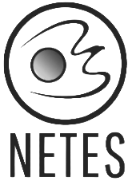MICROPILOT - UNMANNED AIRCRAFT IN THE SKY
They may look like toys, but they’re anything but. Unmanned aerial vehicles (UAVs) are teeny helicopters and planes that aren’t much bigger than remote-control models. But their mission is a lot more important.
“They collect important data. In the military, they’re used to gather intelligence info without putting soldiers’ lives at risk,” explains Howard Loewen, president of MicroPilot. “On the civilian side, they can be used for inventory or to gain information about isolated locations.”
Since 1994, MicroPilot has manufactured tiny computers that fly aboard the five-pound UAVs from a location just outside of Stonewall. They’re one of only three companies in the world that do so. Over 650 companies currently use their software.
“A UAV is an efficient form of collecting data-typically geographical information with longitude and latitude included. The UAV’s digital camera takes a bunch of pictures, our software stitches them all together, and if you get enough of a particular area, it can even provide a 3D image,” Loewen says.
Loewen, an engineer who has his private pilot’s license, decided it would be a fun challenge to make a plane that flew by itself; the rest is history. Today, MicroPilot sells its software to companies from all over the world.
“These aren’t toys-they’re very serious pieces of equipment. Our customers make or buy the planes and we supply the autopilot,” says Loewen, adding that his company has test flights several times a week during the summer months. “They are particularly useful in really isolated places like Greenland, where there’s no search-and-rescue. The only way to collect the data that is needed is with small unmanned aerial vehicles, as they tend not to want to send people up there.”
MicroPilot’s flight testing facility is surrounded by flat farmland as far as the eye can see, and is located only 30 minutes from a major international airport. This allows the company to provide its customers with a testing location that offers the isolation, space and the flexibility needed without prohibitive travel expenses.
The facility is staffed with several permanent flight support personnel and can fly approximately 300 days out of the year. The ambient temperature at the facility can vary from -40 C in the winter to +35 C in the summer, with an equally varied set of wind conditions, so just about anything the UAV will encounter elsewhere is available for testing at MicroPilot. This Micropilot founder Howard Loewen. faci lity operates under a Transport Canada special flight operations certificate and is available to all of MicroPilot’s key clients, says Loewen.
“We have one company that is a gravel supplier, and they need to do inventory on their gravel piles to know how much is left,” he adds. “Using a UAV makes the job easy, as they can measure the gravel piles from the photographs and quickly tell how much they have left. Many civilian companies use UAVs to manage their physical assets.”
Business is booming for MicroPilot. The company went from one person to 26 employees in fo ur years, and is planning on hiring more in the near future.
For more information about MicroPilot and its work, visit their website at www. micropilot.com.
-With files from the Winnipeg Free Press

